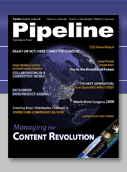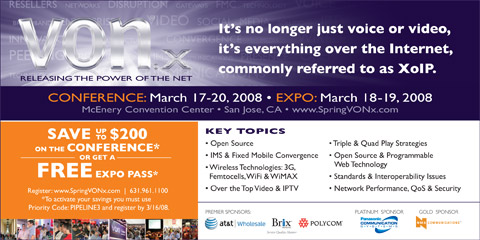|
|

article
page | 1 | 2 | 3 | 4 | they provide higher quality customer experiences and commerce channels that translate into new revenue for their enterprise customers.
The Real Value Proposition
Retailers, entertainment providers, and Web 2.0 innovators are most interested in telco and mobile networks because they present robust, high quality channels through which they can reach individuals safely, predictably and with billing built-in. Telco and mobile networks are secure and equipped with strong accounting mechanisms and controls that generate granular data regarding user behavior and spending. Further, telcos and mobile operators have more experience using this information to bill and collect from individuals and corporations than anyone else. Further, telco networks have already shifted largely to IP, which allows them to be multi-purpose and multi-service in nature.
|
|
Smart channels can adjust quickly to new servicesí requirements, or to new devices and related business applications, and allow them to be brought on-board very quickly. |
|

permissions; and entitlements that are based on these changing data points will drive the action. The operations infrastructure therefore needs to be geared to respond to these changes fluidly by employing policy-driven systems that can play a managerial role between databases that house customer, service and market intelligence and network systems that provide connectivity, service delivery, transaction enablement, and revenue generation.
Incremental Steps
Developing smart distribution capabilities like
|
|
|
|

When it comes to multi-service distribution success, IP is one leg in the stool and billing and usage collection is another. The third leg consists of the operational capabilities necessary to turn telco networks into smart channels. Smart channels can adjust quickly to new services’ requirements, or to new devices and related business applications, and allow them to be brought on-board very quickly. A smart channel also has the ability to differentiate between individuals or end points by acting upon specific information, often in real-time, that’s likely to be housed in a back end or third party system.
Telcos may need to develop new expertise in analyzing and identifying user and services trends to understand individual likes and dislikes and to measure the effectiveness of their enterprise customers’ new commerce infrastructures. Analytical results will change continuously, thus changing the data points relating to usage history; opt-ins; personal preferences; affinity; time-of-day; location; presence; performance and other factors. Within the flow of commerce transactions; content; and interactive advertising, policies;
|
|

this is actually an incremental step for telcos and mobile operators. As mentioned, they already have multi-service networks in place. Many also already have infrastructure that enables on-demand services, like ringtone downloads; debit-based services, like pre-paid mobile; and credit-dependent services, like telephony subscriptions. These are all based on well defined processes that are triggered by specific pieces of information that relate to customers or network capabilities, and are housed in back office and network resident applications.
IMS was intended to provide the kind of policy-based, managerial layer that’s needed, but the complexity inherent in the IMS specification tends to obfuscate this well-intended architecture’s real business purpose. More telcos and mobile operators are asking themselves today, “How can we deliver orchestrated, multi-service offerings without having a full blown IMS architecture?” This is a healthy question. The IMS spec overlooks some of the critical roles that operations systems play, and it doesn’t
article
page | 1 | 2 | 3 | 4 | |
|
|




